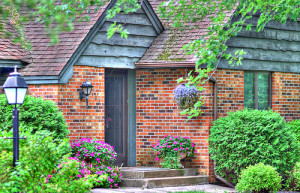 One of the best ways to keep your home from being a money pit is to make it as energy efficient as possible.
One of the best ways to keep your home from being a money pit is to make it as energy efficient as possible.
As you may have expected, old or poorly-insulated doors and windows can greatly affect the energy efficiency of your home. When A/C leaks or cold air comes in, energy prices can skyrocket.
While doors and windows do have a big impact on your monthly energy bill, making sure your doors and windows are modern and energy-efficient isn’t the only thing you can do to keep your bill down. These 9 ideas will help improve the energy efficiency of your home, putting you on the right track towards saving money and reducing your carbon footprint:
Perform a home energy audit. The first thing you’ll want to do is figure out how much energy your home is actually using, and the best way to do that is through a home energy audit. While a professional audit is the most thorough assessment, you can do it on your own; some of the other tips we have below will actually come into play in your DIY audit.
Identify phantom loads. When your T.V. is off, that means it isn’t using any electricity, right? Wrong. This is what is called a “phantom load.” Most electronic devices throughout your home will still use a minimal amount of energy any time they’re plugged in—even when they’re off. To see what devices are most guilty of this “vampire energy,” check out this great graph from GOOD magazine.
Turn off lights. This one seems like a total no-brainer, but many of us are guilty of leaving the lights on when we leave a room. Even if you’ll only be gone for 10-15 minutes, that amount of time can really start to show in your energy bills.
Get a smart thermostat. A smart thermostat is more than just a fancy new piece of wall art. Investing a smart thermostat can help whip your energy use into shape. Take for example Google’s Nest thermostat, which detects when you aren’t home, collects data on your usage patterns, and can be controlled through an app. Smart thermostats have been shown to reduce energy costs by 10-15% over the course of a year.
Seal up doors, windows, and other leaks. As we mentioned above, leaky windows and doors are only half the battle—but they can still wreak havoc on your energy bill. For the quick fix, many hardware stores carry DIY window sealers, but your best bet is to get a professional who will properly seal up your leaks.
Purchase new windows. Depending on the age of your windows, it might not be enough to get them sealed or insulated. In this case you are better off purchasing a new window. As we’ve discussed before on the blog, newer windows can have a significant impact on your energy bill because they’re so much better at reducing air infiltration. They will also increase the insulation value with newer technology of Low E glass and argon gas.
Replace incandescent light bulbs. Yes, incandescent light bulbs are cheap, but the amount of energy they use up is just not worth the time or money. Invest in CFL or LED bulbs, which can save you good amount of money and keep you from having to switch out your bulbs what seems like every three months.
Seal ducts and properly insulate. Ducts are meant to help distribute air throughout your home, but over time your ducts end up getting leaks and holes, meaning nearly 20-30 percent of that conditioned air gets wasted. You can fix this by having your ducts properly sealed and insulated, which can be done professionally or on your own.
Purchase a tankless water heater. Unlike traditional water heaters, tankless water heaters only heat up the water as you need it. Yes, the cost up-front for installation is much higher, but in return you have up to 30% less energy consumption, longer life expectancy, and less space taken up. For more info on which water heater is right for you, check out this great guide by Home Depot.
Have questions? Want to learn more about what Omaha Door & Window has to offer? Reach out to us via our website’s Contact Us page. We’d love to help out! We’re also available on Facebook and on Twitter @OmahaDoor.
—
